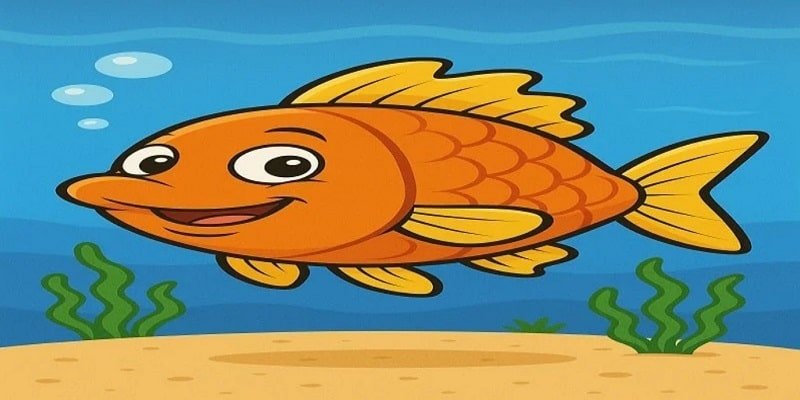10 Lines on Fish: Fish are fascinating water-dwelling creatures. They come in various shapes, sizes, and colors, making them a favorite subject for children and adults alike. Be it oceans, rivers, or aquariums, fish play an important role in nature. Given below are three sets of “10 Lines on Fish” prepared for different class levels, along with frequently asked questions.
(10 Lines on Fish)
10 Lines on Fish for Class 1-3
- Fish live in water like rivers, lakes, and oceans.
- They have fins and tails to help them swim.
- Fish breathe through gills, not lungs like us.
- They come in many colors like red, blue, and golden.
- Some fish are large, while others are small.
- Fish eat small plants, insects or other fish.
- They lay eggs, from which baby fish hatch.
- People keep fish as pets in aquariums.
- Fish cannot live without water. 10. They are important for nature and food.
10 Lines on Fish for Class 4-6
- Fish are aquatic animals found in fresh and salt water.
- Their bodies are streamlined to swim easily.
- Their gills draw oxygen from the water to help them breathe.
- The scales of fish protect their bodies from injuries.
- Some fish like sharks are predators, while others eat plants.
- They reproduce by laying eggs, which is called spawning.
- Fish like salmon travel long distances to spawn.
- Overfishing and pollution threaten many fish species.
- People enjoy fishing as a hobby and for food.
- Fish are an important part of the food chain in aquatic ecosystems.
10 Lines on Fish for Class 7-10
- Fish belong to a group of vertebrates called Pisces.
- They are cold-blooded, which means that their body temperature changes with the water.
- Their swim bladder helps them swim at different depths.
- Some fish, like the electric eel, generate electricity for protection.
- Marine fish live in salt water, while freshwater fish live in rivers and lakes.
- Overfishing, climate change, and habitat loss threaten many fish species.
- Fish farming (aquaculture) helps meet global food demands.
- Some fish, such as clownfish, have symbiotic relationships with other marine organisms.
- Fish migration is a fascinating natural phenomenon important for reproduction and survival.
- Conservation efforts such as marine reserves help protect fish biodiversity.
FAQs.
Question 1. How do fish breathe inside water?
Answer: Fish use gills to extract oxygen from water, while humans use lungs.
Question 2. Can fish live without water?
Answer: No, fish need water to breathe and survive. They die quickly outside of water.
Question 3. What do fish eat?
Answer: Some eat plants, algae or small insects, while others are carnivorous.
Question 4. How long do fish live?
Answer: Lifespans vary – goldfish live for 10-15 years, while some sharks live over 100 years!
Question 5. Why are fish important?
Answer: They maintain aquatic ecosystems and provide food for humans and animals.
Conclusion
Fish are amazing creatures with unique adaptations. Learning about them helps us understand biodiversity and the need to protect our oceans and rivers. Hope these lines and FAQs help students understand fish better!
You May Like It-
